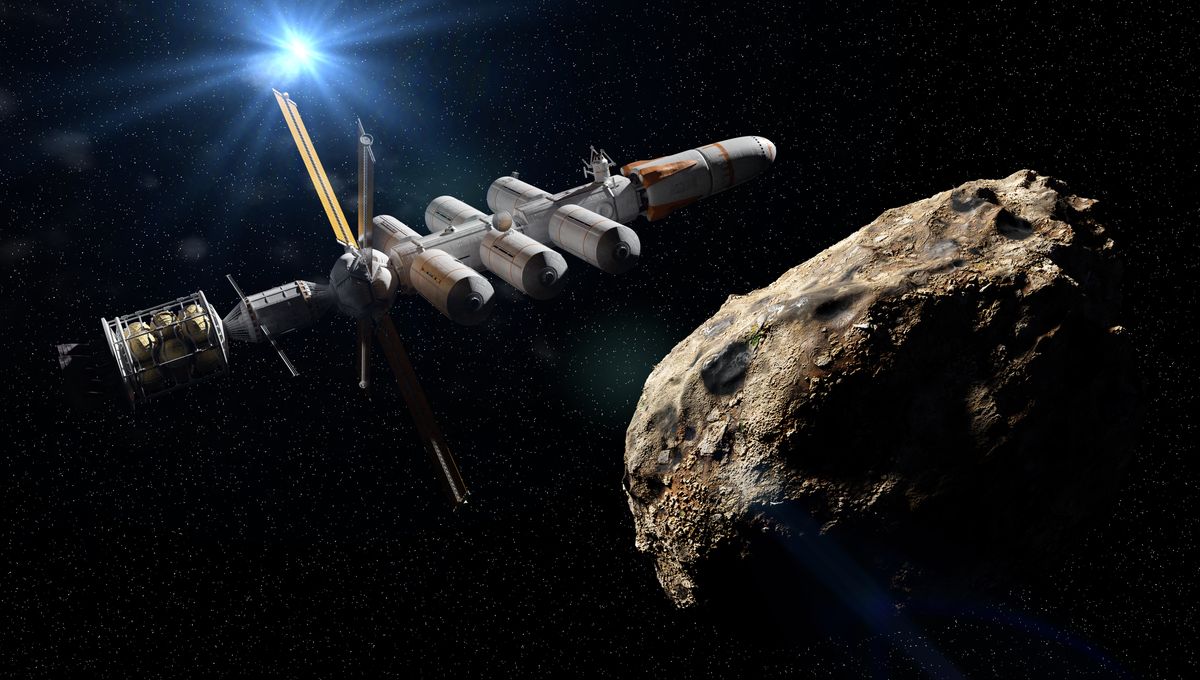
A high-powered pulse of X-rays could vaporize part of an incoming asteroid and change its trajectory in the process, a new study proposes. Whether the approach would be more cost-effective than alternatives under consideration remains to be seen, but questions also need to be asked about the safety of building a suitable instrument in the first place. Meanwhile testing has been done on a safer scale.
The DART mission proved the potential for deflecting an asteroid on the path to Earth. However, questions remain whether this is the best way to deal with future such threats. Scientists at Sandia National Laboratories tested an alternative on a very small scale by firing X-ray pulses at the surface of two model asteroids in a vacuum.
The pseudo-asteroids in question were just 12mm (0.5 inches) wide. If something that size was heading for Earth it would make an eye-catching meteor, but would burn up long before reaching the ground. However, the new work proved the principle that by vaporizing two of the more common minerals in asteroids it is possible to change the momentum of the object as a whole. Scaled up, the approach could shift an asteroid sideways so that it slides past Earth, rather than making a direct hit.
Sooner or later the Earth will face an encounter with an object large enough to do us serious damage. A great many ideas have been proposed for how to deal with such a threat beyond Hollywood’s favorite “blow the damn thing up” approach. Most acknowledge it’s almost certainly more practical to change a space object’s orbit rather than destroy it entirely.
There’s a clue about how to do that in the natural behavior of comets. As sunlight heats a comet’s ice until some turns to gas, the molecules escape, forming a tail. As Newton’s third law predicts, the acceleration of the gases away from the comet applies a force to the nucleus, which can be enough to detectably change its path.
If we can replicate the effect on a threatening object, and carefully target where vaporization occurs, we can shift orbits in the desired direction.
Of course, turning rock to gas is a lot harder than doing the same to ice. Some proposals involve focusing lasers on the incoming threat, but X-rays carry far more energy per photon than visible light.
Using the largest pulsed power device in the world today, known as Z, Scania researchers produced shockwaves in argon gas to create a 1.5 Mega Joule X-ray pulse directed at model asteroids suspended in a vacuum. The pulse made the “asteroids”, one made of quartz, the other of fused silica, heat up so much each released a cloud of vapor, creating a shockwave that pushed at the object it came from.
Despite the differences in their composition, both “asteroids” were accelerated to almost identical speeds, 69.5 and 70.3 m/s (156 mph and 158 mph) respectively. Both figures easily exceeded expectations.
Making something that small move, even at the speed of a bullet train, might not seem a major achievement, but the authors calculate it can be scaled up to work for objects 4 kilometers (2.5 miles) wide. That’s not quite a dino-killer, but probably large enough to end civilization.
The DART mission provides a hint to the viability of the idea. Dimorphos’s orbit was changed more than expected by the impact. Physicists have calculated this is because the cloud of material ejecta transferred more momentum to the asteroid as it expanded than the spacecraft itself. (You can read an excerpt and interview with Robin Andrews, author of How To Kill An Asteroid, who was right there at mission control, in the October issue of CURIOUS)
Unfortunately, it’s a lot harder to anticipate how much force a shockwave will deliver, compared to an impacting object of known mass. That’s a problem because, unless we are willing to venture out to the asteroid belt, there is a shortage of suitable objects to use as guinea pigs for future deflections. Dimorphos was chosen for the DART mission because it not only passes conveniently close to Earth, but it orbits Didymos, making any change in path far more visible than on an object orbiting the much more distant Sun.
Unless we plan to keep hitting the same unfortunate asteroid over and over again, we need alternative test subjects to compare the effectiveness of different approaches. The demonstration that these lab “asteroids” can perform that role could be more important than the measurements obtained for this specific approach.
Nevertheless, it’s unlikely humanity would want to trust its fate to a technique that hasn’t been tested on a full-sized asteroid. If X-ray pulses are the method we choose, that means putting something in space capable of delivering the requisite dose, which might raise a few eyebrows if only part of the planet has control over which way it’s pointing.
The study is published in Nature Physics.
Source Link: The Latest Idea For Deflecting Threatening Asteroids? X-Ray Pulses